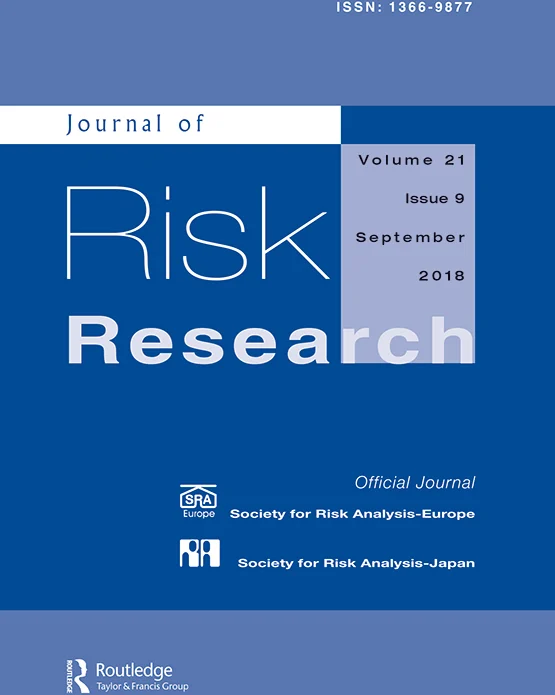发言人很重要:评估主要发言人在介绍加拿大三个司法管辖区的COVID-19建模数据时的危机沟通风格
IF 1.7
4区 管理学
Q1 SOCIAL SCIENCES, INTERDISCIPLINARY
引用次数: 0
摘要
摘要如果人们信任风险管理者及其处理危机的能力,风险预防措施更有可能被接受,这通常取决于谁与公众沟通。在新冠肺炎大流行期间,一些加拿大官员成为其管辖范围内应对疫情的主要发言人,几乎每天都向公众发表讲话。我们评估了每个司法管辖区的主要官员如何选择与公众沟通流行病学建模,以及他们如何使用建模数据来支持他们的疫情决策。我们对在不列颠哥伦比亚省、曼尼托巴省和安大略省举行的新闻发布会进行了文本和视觉分析。然后,我们询问了焦点小组参与者,他们最信任谁,最不信任谁,以获取有关新冠肺炎的信息。我们确定了两种主要的沟通方式:富有同情心的信息交流和居高临下的回避交流。前者之后的发言人通过提供直截了当的答案、展示专业知识,同时展示同理心和风险管理能力,展示了建立信任的努力。那些遵循后一种风格的人主要提供肤浅和防御性的回应,参与推卸责任和将风险政治化。焦点小组的参与者信任大多数发言人。遵循富有同情心的信息风格的发言人被认为是值得信赖的,这可以提高对公共卫生措施的遵守程度。然而,那些使用居高临下的回避风格的人被认为不那么值得信赖。我们的研究结果首先强调了在公共卫生危机期间,将政治议程与风险沟通和应急响应脱钩的重要性。其次,发言人应接受风险和危机沟通方面的培训,积极与记者和公众接触。最后,危机沟通应强调指导方针背后的科学证据,同时承认科学的不确定性。本文章由计算机程序翻译,如有差异,请以英文原文为准。
The spokesperson matters: evaluating the crisis communication styles of primary spokespersons when presenting COVID-19 modeling data across three jurisdictions in Canada
Abstract Risk prevention measures are more likely to be accepted if people trust risk managers and their ability to handle the crisis, which often depends on who communicates with the public. During the COVID-19 pandemic, some Canadian officials became the main spokespersons of pandemic response in their jurisdiction, speaking almost daily to the public. We evaluated how the primary official for each jurisdiction chose to communicate about epidemiological modeling with the public and how they used modeling data to support their pandemic decisions. We conducted textual and visual analyses of press conferences held in British Columbia, Manitoba, and Ontario. Then, we asked focus group participants who they trusted the most and the least for information on COVID-19. We identified two main communication styles: compassionate-informative and condescending-evasive. Spokespersons following the former demonstrate a trust-building effort by providing straightforward answers, demonstrating expertise, while showing empathy and risk management competence. Those who followed the latter style predominantly offered superficial and defensive responses, engaging in blame-shifting and politicizing risk. Focus group participants trusted most the spokespersons who follow a compassionate-informative style are considered trustworthy, which could increase compliance with public health measures. However, those who use the condescending-evasive style were seen as less trustworthy. Our results underscore, first, the importance of disassociating political agendas from risk communication and emergency response during public health crises. Second, spokespersons should be trained in risk and crisis communication to engage with reporters and the public positively. Finally, crisis communication should emphasize the scientific evidence behind guidelines, while acknowledging scientific uncertainty.
求助全文
通过发布文献求助,成功后即可免费获取论文全文。
去求助
来源期刊

Journal of Risk Research
SOCIAL SCIENCES, INTERDISCIPLINARY-
CiteScore
12.20
自引率
5.90%
发文量
44
期刊介绍:
The Journal of Risk Research is an international journal that publishes peer-reviewed theoretical and empirical research articles within the risk field from the areas of social, physical and health sciences and engineering, as well as articles related to decision making, regulation and policy issues in all disciplines. Articles will be published in English. The main aims of the Journal of Risk Research are to stimulate intellectual debate, to promote better risk management practices and to contribute to the development of risk management methodologies. Journal of Risk Research is the official journal of the Society for Risk Analysis Europe and the Society for Risk Analysis Japan.
 求助内容:
求助内容: 应助结果提醒方式:
应助结果提醒方式:


